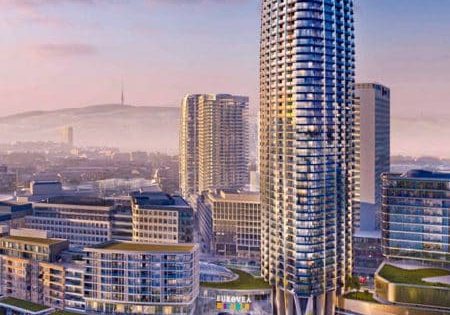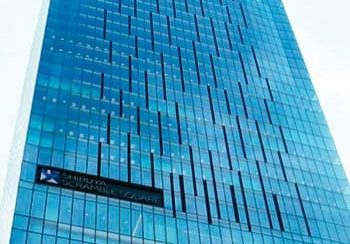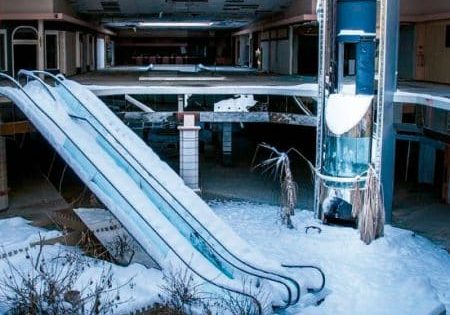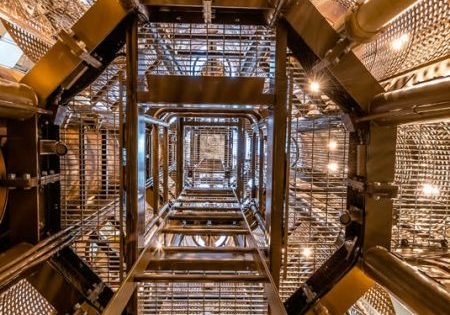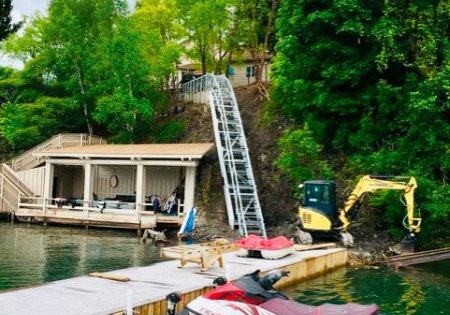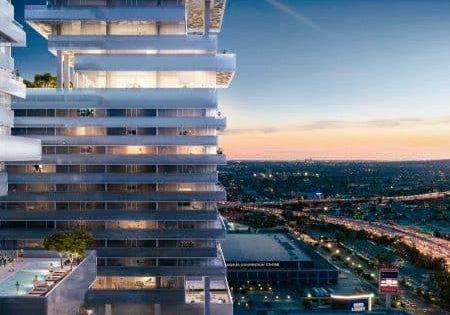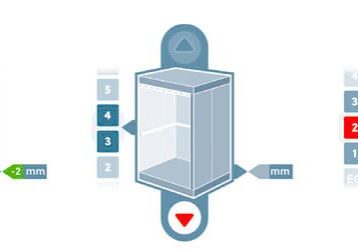A 50 – 50 Proposition
Feb 1, 2020
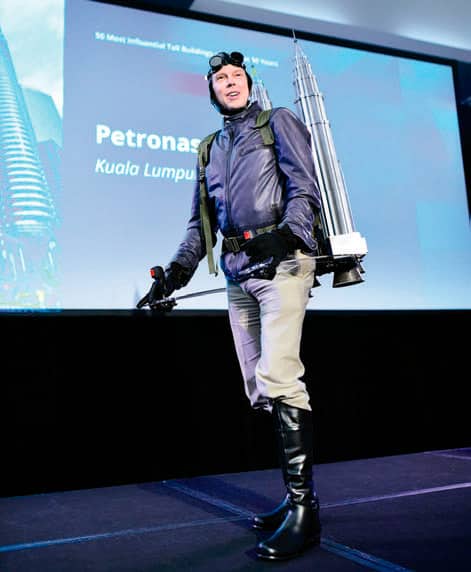
CTBUH 10th World Congress celebrates organization’s first half- century with a look ahead.
Photos courtesy of CTBUH
In November 2019, the Council on Tall Buildings and Urban Habitat (CTBUH) held its 10th World Congress in Chicago. The congress’ theme, “50 Forward | 50 Back: The Recent History and Essential Future of Sustainable Cities,” was designed to celebrate the 50th anniversary of the organization’s founding and provide the intellectual framework for the event. Day one of the congress included workshops and CTBUH committee meetings; days two and three comprised the core conference; day four offered delegates the choice of offsite programs in Chicago or a daylong symposium on skyscraper history; and days five and six featured regional programs in Toronto and NYC.
The core conference featured nine parallel tracks. Three tracks were directly linked to the conference theme: “50 Back: Reflections on Urban Innovation, The Now: What Users Want,” and “50 Forward: The Future of Cities.” Two tracks addressed ongoing topics of CTBUH interest and research — “Smart Cities” and “Timber Rising” — and the remaining four tracks reflected CTBUH’s global presence: “Asia & Australia,” “Americas,” “Europe” and “Middle East & Africa.” So many parallel tracks meant that congress delegates had to choose from a list of nine concurrent sessions that, over the course of the two-day core conference, featured 121 paper presentations and eight panel discussions. One of the consistent themes that was threaded throughout this dense web of information was the past, present and future of vertical-transportation (VT) systems.
In fact, the VT industry had an almost inescapable presence in Chicago. Of the 1,363 registered delegates, 92 were VT industry members (6.7% of attendees). KONE, Otis, Schindler and thyssenkrupp were Platinum-level congress sponsors; KONE sponsored the app used by delegates to access congress schedules and related information; and Otis sponsored the symposium on skyscraper history. In addition to sponsorship, VT industry members made substantive contributions to the congress’ intellectual content through their participation in 10 sessions. This participation included being a member of a panel discussion, chairing a session and delivering papers. On the first day of the core conference, Matthew Watkins, executive vice president, marketing and communications, thyssenkrupp, Dallas, served as chair of “Learning From Tall Building History”; Johannes de Jong, executive vice president, Elevating Studio, Pte., Ltd. of Singapore, presented “Vertical Transportation: The Past 50 and the Next 50 Years of Development”; Florian Troesch, vice president, Business Innovation at Schindler in Zurich, presented “The Future of Occupant-Responsive Buildings”; and Larry Wash, executive vice president, KONE Americas in Chicago, presented “Bringing Intelligent Services to Vertical Transportation Solutions.”
One of the consistent themes that was threaded throughout this dense web of information was the past, present and future of vertical-transportation (VT) systems.
The second day of the core conference featured an opening plenary session panel discussion titled “The Now: Servicing the Modern Tall Office Building,” which included Thomas Vining, president, Otis Americas. Day two Thomas Vining also featured Markus Jetter, head of Research & Innovation Rottweil Center, thyssenkrupp of Stuttgart, Germany, who presented “Lift and the City: How Elevators Change and Reinvent the Shape of Cities”; Robert Boog, vice president, sales and marketing, large project division, Schindler, Zurich, who chaired “Toward an Equitable Urban Future”; Michael Cesarz, CEO, MULTI, thyssenkrupp, who presented “The Third Dimension of People Transportation”; and Steven Gonzalez of KONE presented “Future-Proofing People Flow in Tall Buildings.” During the skyscraper history symposium, “First Skyscrapers | Skyscraper Firsts,” Richard Pulling, executive consultant, Otis, chaired “Skyscraper Firsts,” and Lucien Wedzikowski, director, Global High Rise, Otis, presented “Double Deck Technology: Transforming Skyscrapers Through History.”
The various paper presentations illustrated contemporary VT industry themes, ideas and concerns, which were typically presented through the lens of a given company’s perspective. A consistent theme was the presence and importance of big data and the Internet of Things (IoT) in building facilities-management systems and the development of “smart buildings.” This theme was also addressed in terms of equipment lifecycles, energy efficiency, system performance, and preventive and predictive maintenance. The integration of VT systems into the life of building users was another theme, which was discussed in terms of the total user experience within a building, as well as the possible expansion of VT systems beyond individual buildings to include the broader urban environment and other transportation systems. There was broad agreement that a VT industry goal is the creation of an interconnected network that provides a seamless user experience, facilitating effortless movement through a city, into a building and to a destination — whether it be work, play or home. These ideas were also discussed in the context of CTBUH research themes concerning the projected growth of urban areas over the next 50 years, and the possible creation of megabuildings or self-contained vertical cities.
As was the case in past CTBUH meetings, the majority of the VT company presentations addressed commercially available technologies and systems. For those familiar with the industry, while the presentations were enjoyable, they did not include much in the way of “new” information. There was, however, one exception: Troesch included a video in his presentation that introduced the audience to “PORTa1,” which he described as Schindler’s “sliding-door innovation.” Schindler introduced PORT, its third-generation destination-dispatch system, in 2010. In 2016, it introduced myPORT, an app that allows users to access elevators and other building systems through their smartphones. PORTa1 is a sliding-door system designed to provide access to apartments, offices, etc. The door is composed of two panels that, when they first slide out to seal the doorway, are compressed together. Once fully extended, they separate, creating two flush-mounted doors (one interior and one exterior) with an air gap for acoustical privacy. This represents an innovative reinterpretation of the typical elevator dual-door system (one for the car and one for the shaft) and its application to other architectural settings.
In addition to publishing a book of abstracts, CTBUH also published a book of the congress proceedings: “50 Forward | 50 Back: The Recent History and Essential Future of Sustainable Cities” (edited by Jason Gabel and Daniel Safarik). However, unlike past events in which all the papers from the proceedings were reproduced, CTBUH selected only 36 of the 121 presented papers for inclusion in the book. These included Jetter’s paper, “Lift and the City: How Elevators Reshaped Cities,” and de Jong’s paper, “The Past 50 and the Next 50 Years of Development.”
Jetter provided a broad overview of thyssenkrupp’s contributions to contemporary elevator technological development, which included its TWIN and MULTI systems. He also addressed “performance improvements to conventional systems”; ongoing improvements in “traffic management algorithms”; “energy management optimization”; and “interconnected” digital systems (building information management, digital twins, etc.). De Jong’s paper addressed his topic in broad brush strokes that reflected his extensive career in the VT industry.
The congress also included, as have all past CTBUH events, a variety of networking and social events. This year, the highlight was the Congress Dinner that capped the end of the core conference. In celebration of CTBUH’s 50th anniversary, Executive Director Antony Wood wanted to recreate the iconic 1931 Beaux Arts Ball, during which several NYC architects wore costumes that resembled famous skyscrapers they had designed. Wood challenged contemporary architects and developers to attend the dinner dressed as their buildings. (As an incentive, he offered a US$1,000 prize for best costume.) The response was overwhelming, and the pre-dinner reception was alive with “walking buildings.” After delegates were seated for dinner, the costumed participants walked one-by-one down a runway and were judged. The top prize was awarded to Darin Cook, Senior Associate Principal with Pelli Clarke Pelli Architects, whose costume presented the Petronas Towers as an architectural jetpack.
The CTBUH 10th World Congress was a fitting celebration of CTBUH’s 50th anniversary. This year’s events include the annual awards celebration; the CTBUH Tall + Urban Innovation Conference, which will take place April 5-7 in Chicago; and the annual CTBUH Conference, “Humanizing High Density — People, Nature & the Urban Realm,” which will take place October 19-23 in Singapore.
Get more of Elevator World. Sign up for our free e-newsletter.


